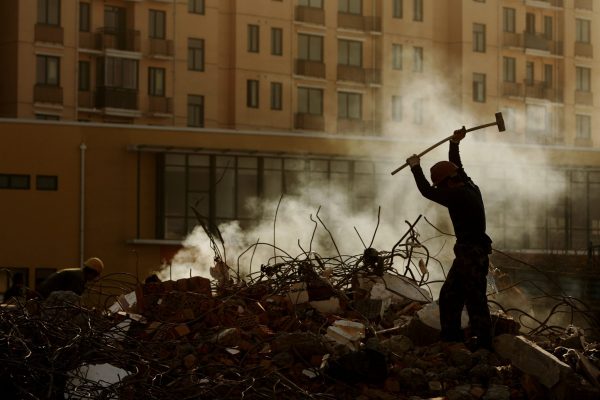Leading up to 2009, labour dispute cases and workers’ strikes skyrocketed. Workers were becoming more confident in their ability to organise and pressure their employers and the local authorities for better conditions and legal protection. This created real momentum for labour reforms.
Chinese workers have since benefited from their government’s labour reforms. Government-mandated minimum wages increased significantly and real wages are growing. The government endorsed the legitimacy of workers’ ‘rights protection’. In 2018, the government enacted legal reforms such as the Labor Contract Law to strengthen legal protection. The Labor Dispute Mediation and Arbitration Law offered dispute resolution mechanisms to resolve workplace grievances.
The All-China Federation of Trade Unions trialled union reforms that increased union membership and recognised workers’ role in negotiating with employers through collective bargaining. Awareness and protection of occupational health and safety also increased. There is greater recognition of the importance of protecting female workers against discrimination in hiring and promotion. Institutionalised urban discrimination against rural migrant workers has decreased and rural migrant workers have more access to urban amenities as a result of hukou reforms.
But in other respects, Chinese workers have either not gained significantly or lost ground. Reforms to curb informalisation of labour have not stopped the use of agency workers who are paid less than their co-workers or student interns forced by their schools to work in jobs unrelated to their studies. According to China’s National Bureau of Statistics, the percentage of rural migrant workers with a labour contract declined from 43.9 per cent in 2012 to 35.1 per cent in 2016.
The labour reforms under the Hu–Wen administration aimed to accommodate workers’ interests and incorporate workers into the industrial relations system. Yet labour strikes continued to increase after 2009. Large-scale factory strikes took place each year over low wages, non- or under-payment of social insurance contributions and lack of layoff compensation.
This was partly due to China’s slowing economic growth triggering more disputes and problematic reforms. Barriers remain in accessing legal mechanisms for resolving disputes. The union reforms were top-down and bureaucratic — workers were not empowered to negotiate with management.
By the mid-2010s, the Chinese government began to show its growing impatience with the labour reforms. The clearest sign of this was the closing down of non-government labour rights organisations in Guangzhou and the arrests of their staff who worked to protect workers’ rights and promote collective bargaining in December 2015.
The crackdown had chilling effects among labour groups and signalled the government’s intention to criminalise independent rights advocacy. It was part of a broader political shift preceded by the arrests of human rights activists, lawyers, anti-discrimination and feminist activists a few months earlier.
In mid-2018, a unionisation drive by workers at Jasic Technology in Shenzhen precipitated a new round of repression against workers and college students who came out to support them. The repression has since widened and spread to other labour activists unconnected to Jasic.
The nature of state repression is shifting from punitive to pre-emptive. Authorities are rounding up activists who are capable of helping workers rather than for any specific actions they have taken. The space for workers to organise has been narrowed to its slimmest in the last decade.
The optimism for more labour reforms from a decade ago now seems extinguished. Labour reforms have either stalled or lost momentum altogether. There has been no major labour legislation for several years and union reforms have stopped.
New challenges to labour relations are emerging. Unemployment is a key government concern. Manufacturing jobs are moving into inland regions and out of China in search of cheaper labour. Automation is threatening jobs in factories and the US–China trade war is creating uncertainty for Chinese industries.
Work facilitated by digital platforms seems to offer an employment solution and an escape from factory jobs. Whether the logistics and service sectors will generate enough employment for the millions whose jobs may be disappearing in the coming years remains to be seen. The Chinese government is encouraging migrant workers to go back and start their own businesses.
The turn toward pre-emptive repression seems capable of keeping a tight lid on civil society organisations and workers’ protests and will likely continue. As labour organising declines in manufacturing, mobilisation in the logistics and service sectors is rising sharply. Strikes have taken place among Walmart retail workers, truck drivers, crane operators, delivery drivers, teachers and taxi drivers in recent years.
In the technology sector, workers mobilising online in early 2019 against the ‘996’ work schedule — working from 9am to 9pm six days a week — gained widespread public support.
At a time when China’s labour relations are changing and facing new realities, it is time for more and deeper reforms that recognise workers’ roles in negotiating their work conditions and do not see their rights advocacy as a political threat to be managed with criminalisation.
Kevin Lin coordinates the China Program at the International Labor Rights Forum, Washington DC.
This article appeared in the most recent edition of East Asia Forum Quarterly — Chinese realities — Vol. 11, No. 2.


What will the Chinese government do with its workforce if it allows the Chinese private companies to ship the jobs to other lower-wage countries or if they automated the jobs? You are really sitting on a keg of gunpowder or rather a huge dump of gunpowder.